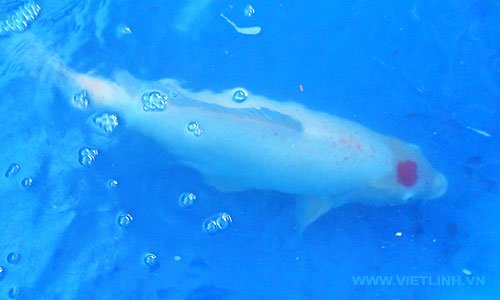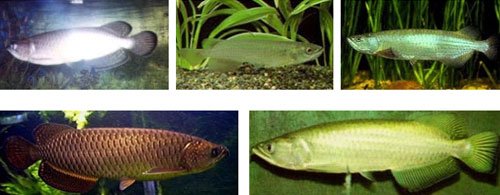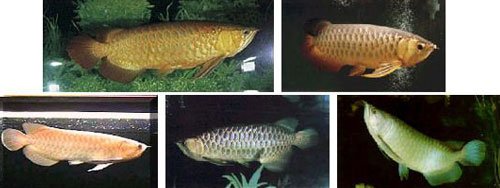Koi as a Hobby and Cultural Symbol
Koi fish, known scientifically as Cyprinus carpio, are ornamental carp that originated in Japan more than 200 years ago. These colorful, peaceful fish have become popular around the world for their beauty, symbolism, and calming presence in garden ponds.
Koi as a Hobby and Cultural Symbol
In Japan and many parts of the world, koi keeping is considered an art. Their graceful movements, vivid colors, and tranquil presence bring peace and joy to hobbyists. Some koi even sell for tens of thousands of dollars at international auctions.
Clubs, associations, and koi shows are held worldwide, promoting high standards in koi breeding and care. With proper guidance and dedication, anyone can enjoy the satisfaction of raising these “swimming jewels.”
Koi fish symbolize perseverance, prosperity, and transformation. Keeping koi is more than a hobby—it’s a lifestyle that brings harmony to your home and garden. Whether you’re a beginner or an experienced aquarist, caring for koi offers a rewarding connection to nature and timeless beauty.

Popular Koi Varieties. Koi are classified into many varieties based on color patterns and scale types. Some of the most well-known types include:
- Kohaku – White body with red markings.
- Sanke (Taisho Sanke) – White body with red and black markings.
- Showa (Showa Sanshoku) – Black body with red and white patterns.
- Tancho – White koi with a single red spot on the head, reminiscent of the Japanese flag.
- Asagi – Light blue scales on the back with red markings on the sides and fins.
- Shusui – A scaleless (doitsu) version of Asagi with a sleek, modern look.
- Ogon – Metallic-colored koi (e.g., gold, platinum).
- Hi Utsuri, Kin Showa, Kujaku, Koromo, and others – Each with unique coloration and appeal.
Lifespan and Growth
Koi can live for decades. With proper care, they typically reach 25–35 years of age in a garden pond, though some can live over 100 years. They grow steadily—usually 5 to 10 cm per year—reaching adult lengths of 60 to 90 cm depending on the variety and conditions.
Koi Fish Keeping Guide: How to Raise Nishikigoi the Right Way
Pond Design and Environment
Unlike aquarium fish, koi are best viewed from above, so they are typically kept in outdoor ponds. A well-designed koi pond should meet the following criteria:
- Depth: At least 1.5–2 meters (5–6.5 ft) deep to protect koi from predators and temperature fluctuations.
- Liner: Use pond liner (plastic or rubber), or better yet, build with concrete for durability.
- Size: Start with a minimum of 4–5 cubic meters of water. Larger ponds offer more stability and room for koi to grow.
- Elevated edges: Raise the pond walls 30–40 cm above ground to prevent predators like cats, dogs, or raccoons from reaching the fish.
- Plants and landscaping: Add lotus, reeds, or floating plants for shade and oxygenation. Japanese-style decor (stones, bonsai, lanterns) enhances aesthetics.
Water Quality and Filtration: Koi require clean, well-oxygenated water. Key water parameters:
- pH: Ideally between 7.0 and 7.5.
- Ammonia/Nitrite/Nitrate: Should be kept at 0 ppm or minimal.
- Water changes: Replace 1/3 of the pond water every few days if necessary, especially if nitrite levels spike.
- Filtration: Invest in a quality pond filtration system to manage waste and prevent algae blooms.
- Aeration: Waterfalls, fountains, and air pumps help maintain healthy oxygen levels.
Feeding Koi
Koi are omnivorous and enjoy a balanced diet of:
Commercial koi pellets (herbal-based, fortified with vitamins)
Fresh vegetables (lettuce, spinach)
Occasional treats (worms, shrimp, fruit)
Feed 2–3 times per day when the water temperature is above 15°C (59°F). Stop feeding when temperatures fall below 10°C (50°F), as koi metabolism slows significantly.
Health and Disease Prevention
Common koi health issues include:
- Parasites: Causes itching or flashing (rubbing against surfaces)
- Bacterial infections: Ulcers, sores, white patches
- Fungal infections: Cotton-like growths on the skin or gills
To prevent illness:
- Quarantine new fish before introducing them to your pond.
- Remove sick koi to a separate tank for treatment.
- Use pond-safe medications if needed.
- Maintain stable water conditions and avoid overcrowding.
Filip V – 2025







